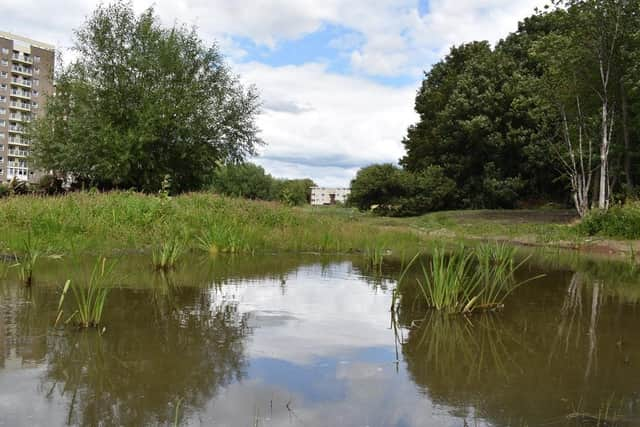East Leeds set for multi-million pound flooding work
and live on Freeview channel 276
The planting, which is part of a programme of flood alleviation measures in the Wyke Beck valley, builds on the recent opening of a flooding control structure and flood storage at Killingbeck Meadows Local Nature Reserve.
The new measures, it is claimed, will give increased protection to residential properties downstream of Killingbeck Meadows, reducing the likelihood of flooding occurring in the future.
Advertisement
Hide AdAdvertisement
Hide AdIt is hoped this will support the development of new brownfield housing, job creation and inclusive growth.


John Woods, flood risk advisor at the Environment Agency, added: “It is great to see the completion of this project to reduce flood risk and benefit the local economy and environment.
“These initiatives show what we can achieve by working in partnership as they provide not only increased resilience to flood risk, but also improved habitats for wildlife and a better quality of life for residents through improved public spaces and catchment management.”
Alongside the flood control structure, new ponds and seasonal wetlands will act as a natural flood storage area and provide more natural habitat in what is already an important green corridor for wildlife.
Advertisement
Hide AdAdvertisement
Hide AdNative woodland and wildflower planting will take place over the coming months in partnership with Yorkshire Wildlife Trust.
More than 8,000 trees will also be planted across the Wyke Beck catchment as part of the region’s catchment wide approach to flood management.
The scheme at Killingbeck Meadows is part of a £4.75m programme of works designed to deliver multiple benefits to the local economy and environment.
Wyke Beck starts at Waterloo Lake in Roundhay Park in north Leeds and flows through the east of the city before joining with the River Aire, south-east of the city centre. It has a long history of flooding and drainage issues.
Advertisement
Hide AdAdvertisement
Hide AdCoun Mohammed Rafique, Leeds City Council’s executive member for environment and active lifestyles, said: “We are delighted that the scheme at Killingbeck Meadows is now complete. This will undoubtedly bring greater reassurance to families and businesses downstream who have experienced the devastating effects of flooding first-hand. Residents will also benefit from the enhanced green space which is so important for our health and well-being.
“I would like to personally thank everyone who has been part of its development and delivery. The extent of partnership working has been truly phenomenal and it is down to the creativity and collaboration of the people involved that has led to such a rich and multi-beneficial programme of works.”